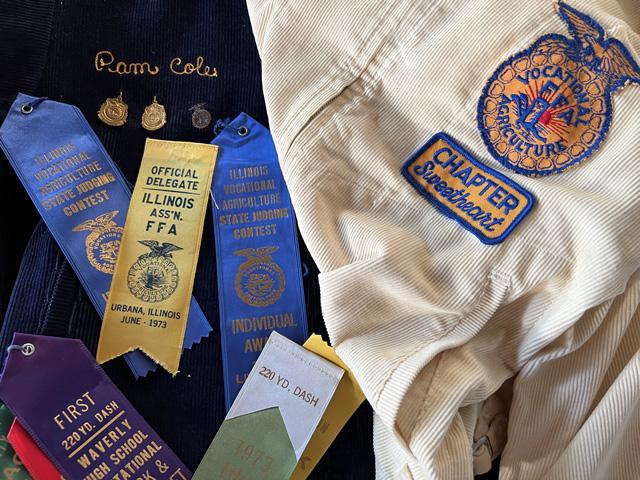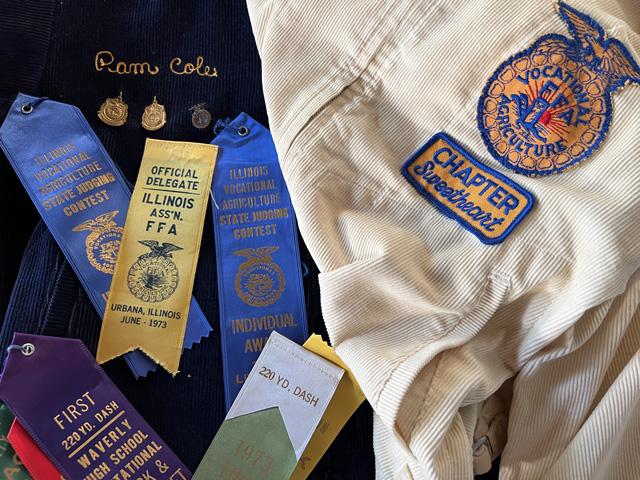Editors' Notebook
Title IX, 37 Words That Changed Everything
On June 23, 1972, a law was signed that changed my life.
When President Richard Nixon penned his name to Title IX of the Education Amendments of 1972, I was finally allowed to take high school agriculture classes, participate in competitive high school sports, and zip up a blue corduroy FFA jacket embroidered with my name.
Allowed. Those activities had previously been off-limits because I was a girl.
A girl.
These are slights that my niece, Alexis Bowman, has blessedly never had to contemplate. She was recently installed as president of North Mac FFA, a consolidated school district in central Illinois. Alexis ran for the office on the campaign that she wants to increase the educational aspects of the local program (and the kids still voted for her). She also participates in competitive sports such as track and weightlifting.
Part of me loves it that she can't fathom not having those opportunities. The other part believes in the need to constantly remind that the discrimination is still a thing and the advancements need to be held dear.
The 50th anniversary of this signing seems a good time to remember the 37 words that defend the right of all to an equal chance regardless of gender.
Title IX reads:
"No person in the United States shall, on the basis of sex, be excluded from participation in, be denied the benefits of, or be subjected to discrimination under any education program or be subjected to discrimination under any education program or activity receiving Federal financial assistance."
Most people associate Title IX with athletics. Certainly, the legislation required reforms to many federally funded institutions in those departments in the form of offering programs and scholarship opportunities to females.
P[L1] D[0x0] M[300x250] OOP[F] ADUNIT[] T[]
However, what is often overlooked is the changes Title IX brought in math and sciences. My personal FFA experience offers an example of why the legislation, rather than just a movement for equality, was needed.
WEARING THE BLUE
As historian Gary Moore told me, the first efforts to meld women into the organization started in 1935. In fact, Moore, a North Carolina State University professor emeritus, said some states such as Massachusetts and New York allowed the participation of women at the state level from the get-go, but females were held back from national involvement.
Moore explores these historical aspects of women in FFA through his blog on how attitudes shifted in the 60s:
https://footnote.wordpress.ncsu.edu/…
After more than 30 years of discussion, women were finally allowed to join the national FFA ranks in 1969, but it was not without struggle. The organization does a thorough job of documenting journey in the special project called The 50-years of Women in FFA https://www.ffa.org/… .
Still, for many of us at the time membership in our local chapters remained closed. My efforts at my rural high school continued to be rejected. Budgetary pressures were most often cited as the reason.
In the spring of 1972, my chapter crowned me the FFA Chapter Sweetheart with a beautiful white jacket, which I recall only stiffened my resolve to officially wear blue. The passage of Title IX on June 23, 1972, meant I could no longer be denied that opportunity.
I keep a small pile of ribbons won at various events from the days that followed. I had only one year, my senior year, to experience what FFA had to offer, and I made hay while I could. The Chapter Greenhand award still sits on my desk. The official blue jacket and the white sweetheart jacket hang side-by-side as further reminders that things can change.
RUNNING TOWARD SOMETHING
My high school offered girls track the year following Title IX too. I have enough stories from that to make my kids' eyes roll.
I can tell them stories of being a finalist in an essay contest and when it came time for the questions following my presentation, I was asked: "Do you believe in equal pay for men and women?" The judge, as my luck would have it, was a staunch opponent of the equal rights amendment currently being debated in the country. I did not win--that year.
There were many who contributed to the passage of Title IX. I was allowed to benefit – not just for that one brief year, but for an entire career working in the field of agriculture. Title IX paved the way for many in all walks of life.
But perhaps more than that, the experiences also gave me a glimpse and a grave appreciation for what it means to be excluded. We know it still happens – in agriculture and so many other cultural ways.
May remembering these 37 words and what they mean give us courage to speak up against injustice and to recognize that fairness differs from entitlement.
For more information I suggest the book Title IX by Linda Jean Carpenter and R. Vivian Acosta, Human Kinetics, Copyright 2005
A great book for children is An Equal Shot: How the Law Title IX Changed America by Helaine Becker, Henry Holt, Copyright 2021
Pamela Smith can be reached at pamela.smith@dtn.com
Follow her on Twitter @PamSmithDTN
(c) Copyright 2022 DTN, LLC. All rights reserved.






Comments
To comment, please Log In or Join our Community .